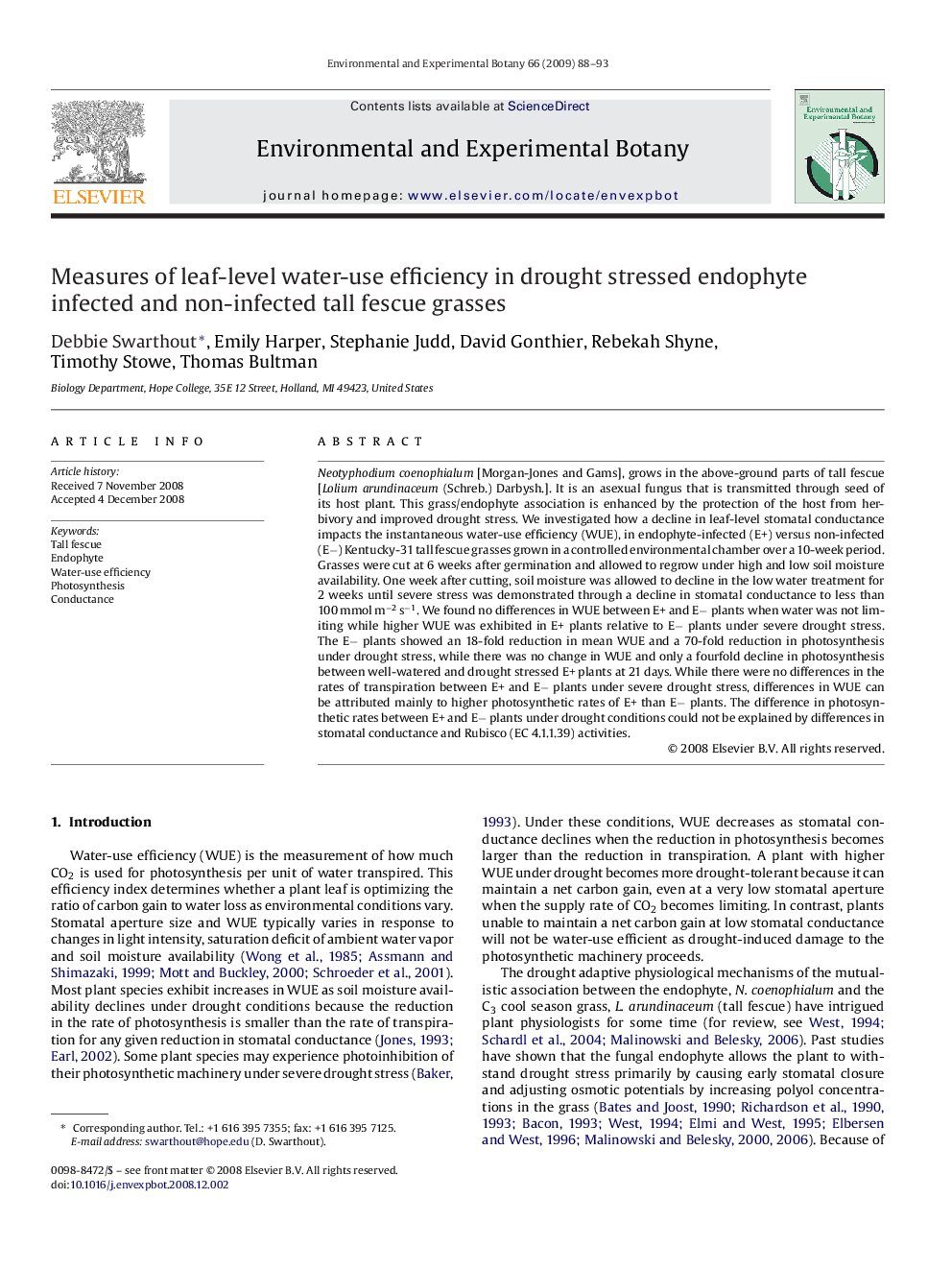| Article ID | Journal | Published Year | Pages | File Type |
|---|---|---|---|---|
| 4555080 | Environmental and Experimental Botany | 2009 | 6 Pages |
Neotyphodium coenophialum [Morgan-Jones and Gams], grows in the above-ground parts of tall fescue [Lolium arundinaceum (Schreb.) Darbysh.]. It is an asexual fungus that is transmitted through seed of its host plant. This grass/endophyte association is enhanced by the protection of the host from herbivory and improved drought stress. We investigated how a decline in leaf-level stomatal conductance impacts the instantaneous water-use efficiency (WUE), in endophyte-infected (E+) versus non-infected (E−) Kentucky-31 tall fescue grasses grown in a controlled environmental chamber over a 10-week period. Grasses were cut at 6 weeks after germination and allowed to regrow under high and low soil moisture availability. One week after cutting, soil moisture was allowed to decline in the low water treatment for 2 weeks until severe stress was demonstrated through a decline in stomatal conductance to less than 100 mmol m−2 s−1. We found no differences in WUE between E+ and E− plants when water was not limiting while higher WUE was exhibited in E+ plants relative to E− plants under severe drought stress. The E− plants showed an 18-fold reduction in mean WUE and a 70-fold reduction in photosynthesis under drought stress, while there was no change in WUE and only a fourfold decline in photosynthesis between well-watered and drought stressed E+ plants at 21 days. While there were no differences in the rates of transpiration between E+ and E− plants under severe drought stress, differences in WUE can be attributed mainly to higher photosynthetic rates of E+ than E− plants. The difference in photosynthetic rates between E+ and E− plants under drought conditions could not be explained by differences in stomatal conductance and Rubisco (EC 4.1.1.39) activities.
